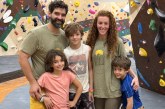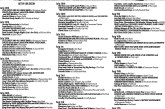The East Tennessee History Center provides an enclave for remembering and celebrating a cherished place
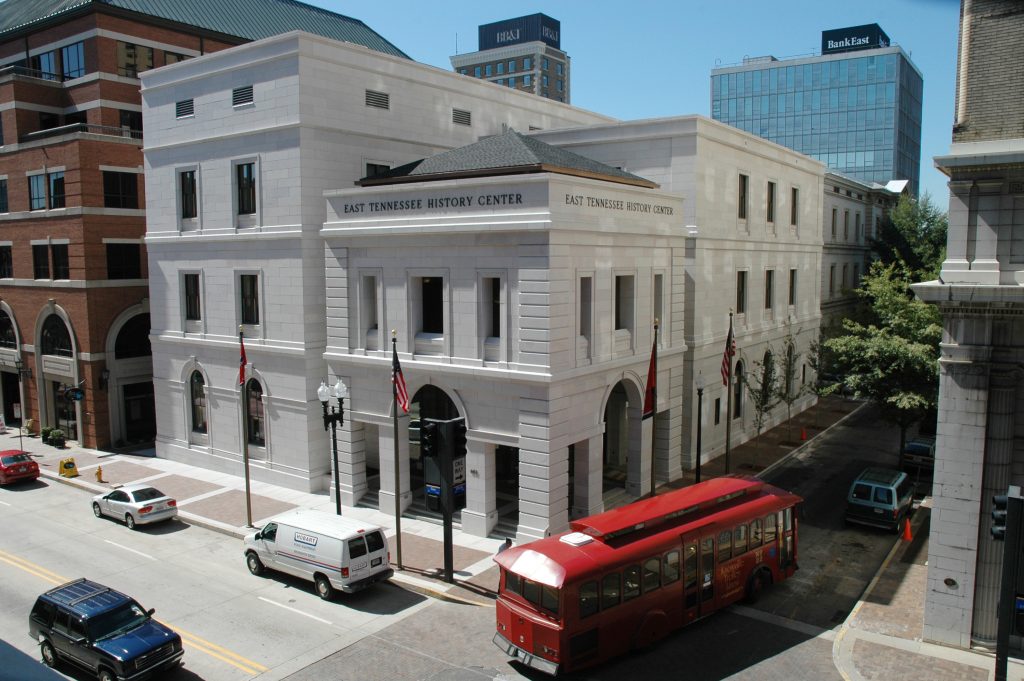
Nestled in the valley between the Cumberland Plateau and the Smokies, there’s a mercurial restlessness to East Tennessee, as if the very ground … a repository for the blood and sweat and tears of laughter and joy shed over its occupation … echoes with the ghosts of people, places and things of the past.
Like so many of his peers and relatives, Dr. Warren Dockter, CEO of the East Tennessee Historical Society, felt it keenly growing up.
It’s a deep and abiding connection that feels more tangible than simple words on the pages of a history book or a stationary object behind museum glass. And after returning to the area from England after working 12 years abroad, the opportunity to come home and do what he loves in a place for which he feels the same … it was kismet, in a sense.
“All of the things this society does is remarkable, and we punch above our weight virtually everywhere,” Dockter told BLANK Newspaper recently. “We do a lot of things, but our mission is to preserve, promote and interpret the history of East Tennessee. One of the things I heard when I came in about three years ago was that it’s often said our museum is one of the best-kept secrets in the area, a hidden jewel, if you will.
“And that’s true because there are still a lot of people who don’t know about us. But I want to be a jewel in the crown, baby. I want everybody to know we’re here.”

A treasure trove within
Located on the block of Clinch Avenue between Market and Gay streets (the official address is 601 S. Gay), the East Tennessee History Center feels, at least from the outside, more like a federal office building than one dedicated to the preservation of the past. Adam Alfrey, assistant director for historical services, acknowledges with a chuckle that the squat, square columns around the front entrance, the imposing size covering an entire block in the middle of downtown and the copious amounts of marble give it an officious feel that belies the personal approach to history that takes place within.
“That’s one thing I really hope people will come to know, is that we are a really accessible history center,” he said. “When you step across that barrier, it feels like we have a team of people who really care about serving the public. We want the public to feel like the records here are their records because they really are. We hold the public’s trust.
“We have people who have lived here their whole lives who walk past this building and never knew what it was, but we want them to know that once you step across that barrier, even if you’ve never opened a history book, you can come here and find your place in the past.”
Figuring out where to start, however, can be intimidating. Fortunately, docents, guides and volunteers are all on hand to point visitors in the right direction. And given that so many interconnected agencies use the building, for both offices and for the preservation of antiquities, the size is understandable.
“Knoxville, for a town of its size, has quite the history-industrial complex. And with a lot of different organizations, I think that’s where the confusion starts,” joked Eric Dawson, manager of the Calvin M. McClung Historical Collection, itself based out of the history center. “The building itself is owned by the Knox County Public Library, and the Historical Society has a few offices here on the second floor. On the first floor is the museum, curated by the Historical Society, and the rest of the building is used by the library for county archives, the McClung Collection and TAMIS [the Tennessee Archive of Moving Image and Sound]. And we all work extremely closely together.”
A point of clarification because the nuances are often lost on those who assume most preservation efforts are born of a singular entity: The Knoxville History Project, founded and led by longtime local journalist and historian Jack Neely, is not located in the center. However, members of that organization work closely with the Historical Society as well as others dedicated to giving life to East Tennessee’s past, including the Beck Cultural Exchange Center, the University of Tennessee History Department, Knox Heritage and more.
A native of Cocke County, Dawson came to Knoxville in 1994 to attend the University of Tennessee, but even as a child, he was drawn to historical narratives outside the norm of grand battles, noble leaders and monumental events. His father was a storyteller, he said, a trait that’s particularly Southern, and over time he found an interest in “found history” – letters told through the point of view of working-class folks that painted a picture of the area’s cultural fabric and everyday life with far greater detail than standard history lessons of important milestones.
“It’s kind of like when TAMIS puts up a clip of downtown Knoxville from the ’40s or ’50s – it gets the nostalgia mill going, and it’s going to get a certain reaction,” he said. “We try not to be in the nostalgia business, but we realize that’s going to draw people in. For example, the anniversary of the World’s Fair [“You Should’ve Been There!,” held in 2022 to commemorate the exhibition’s 40th anniversary] was the most popular exhibit we’ve had in years.
“The people I befriended early on after I moved here were a lot of musicians and artists, and everybody had this interest in history. Cormac McCarthy’s ‘Suttree’ – we loved the book and read it and reread it and discussed it, so this interest was already active when I moved here.”

The collision of past and present
Dawson began writing for the now-defunct Knoxville Voice, and once TAMIS was established by Bradley Reeves and Louisa Trott, Dawson worked a practicum with both it and the McClung Collection. After Reeves moved on, he was brought in to lead TAMIS; when Steve Cotham retired, he was tapped to oversee the McClung. Both, he added, are components of the Knox County Public Library, and both grew out of a donation of the personal library of Knoxville business magnate Calvin McClung, whose window gave the treasure trove of materials – many of which contained early history and valuable genealogical records of the area – to Lawson McGhee Library, the system’s central hub and downtown branch.
“We’re often confused with the McClung Museum [located on the UT campus], which is a different branch of the same family. We are the historical special collection in the genealogy division of the public library,” Dawson said. “He was a wealthy man who had an interest in history and genealogy, and his records were kept in Lawson McGhee for years and years until the library bought the old Custom House that was built in 1874.”
Ground was broken on extensive renovations on Sept. 10, 2001, and within two years, the facility opened. The space was necessary, as the McClung Collection, since it was first donated in 1919, has more than doubled in size, Dawson added.
“We have a lot of early deeds and land grants and a huge photography collection,” he said. “The family of the late Jim Thompson, who founded Thompson Photo in Knoxville, donated a huge photography collection of tens of thousands of negatives – photographs of the city, of prominent citizens and of the Smoky Mountains, which were instrumental in helping turn it into a national park. That in and of itself is an extremely thorough record of Knoxville from the early 1900s through the 1950s.”
It’s also a non-circulated library, meaning that the materials can’t be checked out but can be viewed onsite. Many of the items contained in the building require special access and are kept closely monitored, but the fact that residents can request a viewing of the city’s foundational documents and letters from those who established it is pretty remarkable,” Dawson added.
“The McClung Collection is 103 years old, and over the years, TAMIS became the AV [audio-visual] wing of it,” he said. “We have a lot of people who come to get marriage records, property records, government records, all of this material that’s right here. Right now, we’re working on upping our online game to establish a digital infrastructure for some of this.
“The TAMIS collection alone is one to be envied by other regional archives and libraries, and the McClung Collection – there isn’t anything quite like it in other public libraries I see. And the history center being home to all of these departments working together is a big part of why that is.”
It’s ironic that the TAMIS and Thompson collections, he added, are most likely to engage younger patrons, given that much of it documents a part of the 20th century that took place before many of them were even born – in a time when attention spans are dwindling and consuming large blocks of text isn’t nearly as appealing as the immediacy of visual images. Part of the mission, he pointed out, is engaging people through the various means of storytelling at the history center’s disposal, as well as in looking at history as a living, breathing thing instead of a static timeline. That also means that administrators, curators and others in charge of safeguarding and promoting it have a duty not just to antiquity, but to post-World War II history. Gen Xers and millennials, Dawson said, often do a doubletake when considering that events from their childhoods, which in the mind can seem so recent, are actually part of the city’s historical record now.
“Think of it this way: ‘Nevermind’ [the seminal Nirvana album] came out 30 years ago, and we’re further away from ‘Nevermind’ than ‘Nevermind’ was from ‘Sgt. Pepper,’” he said. “The timeline seems to have collapsed to some of us, but at the same time, it also feels like things are accelerating, especially when some of us think of the 1982 World’s Fair and think, ‘Wait, that wasn’t that long ago!’
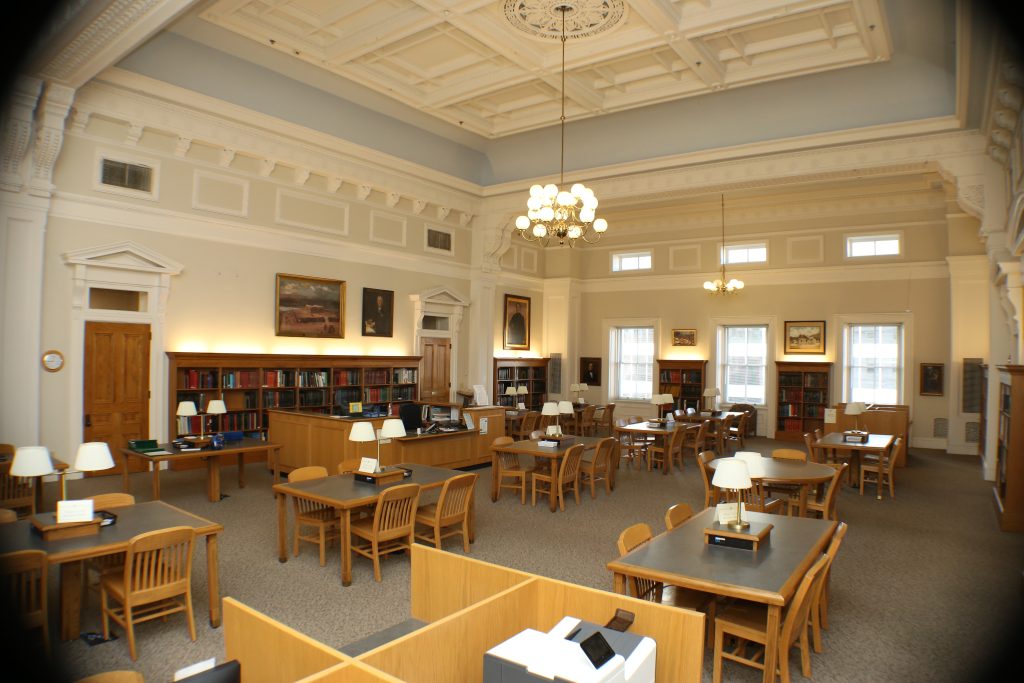
“Part of that is a function of aging, and nostalgia plays a part, as well. But for us, it raises big questions. In a way, we’re sort of in these digital dark ages right now, where all of this stuff has been created electronically, and there’s no agreed-upon method or best practice for preserving them. Think of how many websites we’ve lost, how many cassettes, how many floppy discs. How much information is gone because it’s unrecoverable?”
And so in thinking about the past, the overseers of the center are also very much thinking about the future. A focus moving forward, Dockter said, is to grow the number of objects, papers and memorabilia from the second half of the 20th century, many of which may be considered “everyday life stuff” that has a place in preservation, even if its modernity may make it seem otherwise on the surface.
“For folks from other generations, it’s difficult to connect them with our youth, but one of the things we’re talking about for our children’s gallery, History HQ, is that we need to get a Nintendo or a Sega Genesis,” Dockter said. “When we’re talking about technology, things move so quickly, and we have to start thinking about our collections, so we’re talking about creating a campaign to get people to bring us things that are uniquely East Tennessee from the post-war era.”
Unlike what many might consider the typical museum experience of glass-boxed artifacts with placards detailing what they are and where they came from, the items in the history center seek to place them into context. Take the 1982 World’s Fair exhibit, for instance: In addition to debuting touchscreen technology and digital gas pumps at the event, the participation of China was groundbreaking, and it’s been overlooked ever since, Dockter added.
“The Chinese government had, at that point, embraced these free-market reforms and brought them to the 1982 World’s Fair,” he said. “By 2012 or so, they had a bigger trading economy than the United States, so that global idea of them embracing capitalism and communism at the same time happened here. For good or bad, East Tennessee is a part of that.”
“When we’re considering an object or collection, it’s all about documentation,” Alfrey added. “It could be the coolest thing to look at, but if we don’t have a story to tell about who used it and how, it’s almost useless. It’s like going to the gift shop at Cracker Barrel; there are all of these things related to the past that are cool to look at, but it stops there. There are no connections.”
And those connections, all three men add, lays the deck of that bridge connecting past to present. Yes, there are “marquee” artifacts at the center – perhaps the most famous being “Betsy,” the rifle that belonged to famous East Tennessean and frontiersman David Crockett – but patrons often find their own connections through the genealogy collections that illuminate their ancestors as flesh-and-blood human beings whose lives were a part of the long fabric of East Tennessee culture.
“I think the history center is very unique in comparison to the other ways communities set up their collections of historical materials because it’s very rare to have archival materials, papers and objects in the same place,” Alfrey said. “Over the years, we’ve laid the groundwork for a lot of family collections, things that include papers and objects, and that’s where the real richness of the story is downstairs. A lot of times, we go to museums and historic homes to read and learn about the so-called leaders in the community, the big names, and we do have a lot of information on some stellar people. But this has always been a groundwork institution, and we have all of these other amazing things that tell our history.”

The past isn’t just the past
The telling is as important as the showing. The vast archives and sundry historical artifacts mean little without context, and the collective volunteers and staff members of the building work to bring that to life through various programming.
“There’s so much work we do outside and inside of the museum,” Dockter said. We’re out in the community a lot, even traveling across East Tennessee giving talks to just sort of trying to preserve, promote and interpret our history all the time. We have our ‘Appalachia Sessions,’ which is a musical program where we bus in students from very rural areas, many of whom had never been to Knoxville, and they get to go in and learn about Appalachian culture and history and then attend a musical concert.
“We do fun programming, like our Football Fridays pep rallies where we have food trucks and a sort of historical ‘pep rally’ through tailgating history lessons. For instance, we had Lester McClain who came and talked about being the first Black Vol to play for UT. We also have our Brown Bag Lectures, these noon talks where historians and genealogists come from across the country to talk about what they do and how they do it. We just have so many programs here, and we go to a lot of history fairs across the region and the community.”
On the preservation side of things, the society also serves as a facilitator for members of the community who want to contribute to the historical record of East Tennessee. Those who have a historic home they want to save can be connected with the right resources to do so; individuals who find potentially important papers from the past stashed in attics and steamer trunks can make appointments and bring them in for evaluation and consideration.
“Even if we can’t use them at the moment, we’re always looking for items when it comes time to our rotating exhibits,” Dawson said. “We do have a collections policy, and we’re constantly having internal discussions about what is history, and it can be difficult, because we can’t take everything.”
But they can take a whole lot, and long-range planning means keeping tabs on what may be needed in the future. The museum’s permanent exhibit, “Voices of the Land,” tells the story of the region through its earliest Native inhabitants through the arrival of white settlers and the development into the scruffy city on the river that Knoxville is today. A rotating exhibit is changed out every so often in the Rogers-Claussen Feature Gallery, and currently “They Sang What They Lived: The Story of Carl and Pearl Butler,” put together by Reeves, tells the story of the iconic country music duo that enjoyed a 40-year career.
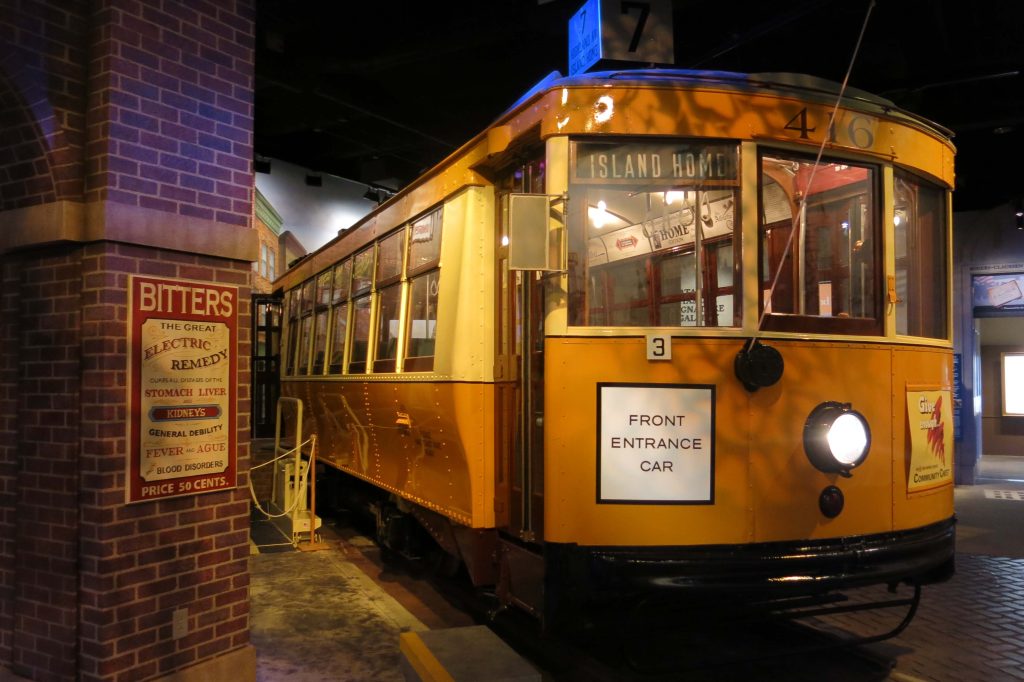
East Tennessee Historical Society
At the same time, Alfrey pointed out, efforts are constantly being made to improve accessibility at the center. In January, the East Tennessee History Center launched “MIA: Museums Increasing Accessibility,” a program using QR codes and plain-text websites that helps visually impaired guests enjoy a more robust, interactive experience. “Voices of the Land” is due for some updates, so conversations are ongoing about that, and the continued examination of useful programming is a never-ending topic of discussion.
Because, Dockter added, as much time as folks spend in the center, it’s never enough to fully comprehend the ways that all that’s happened before continues to impact, shape and influence today, tomorrow and beyond.
“It really is a treasure trove of so many objects and things to see. People go in thinking they’ll spend an hour, and before you know it, five hours will have passed, and they’re only halfway through,” he said. “It’s so easy to get sucked in, which is great because all the stories that are told there are unique and East Tennessean. And I think that’s one of the things our museum communicates so well, is that East Tennessee is such a unique place when you think about all of the different people who lived here and fought to live here.
“From the Native Americans to the Spanish to the French to the English to us as Americans, there’s always been something that draws people to East Tennessee, and there’s no other place in the world like this.
Having traveled the world, I can say that, and here, it’s sort of like we have all these different layers of history on top of each other. We want to give people a taste and show them there’s so much of that, and that it’s so important.
“These are people you know, these are stories from here, and I love that. It’s not some battlefield happening a thousand miles away; it’s all happening in our backyard. And we want folks to come check out some of our programs and understand why we do so much – and that’s because there’s just so much to share. Being a good historian is basically, at its fundamental core, being a good storyteller, and the stories we tell are amazing because they’re everyday stories of people just like you who do extraordinary things and live in an extraordinary place.”
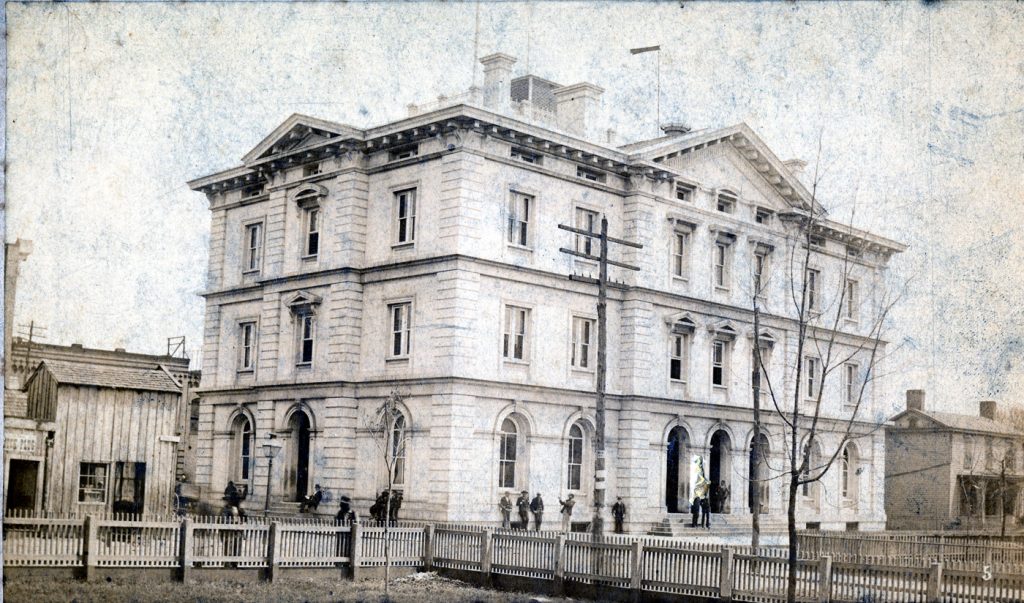
wildsmith@blanknews.com




